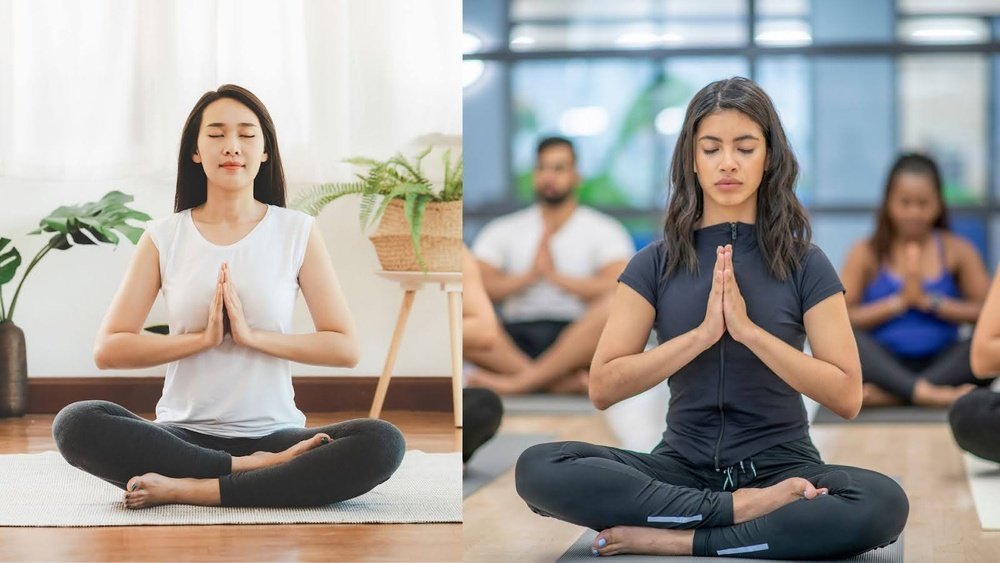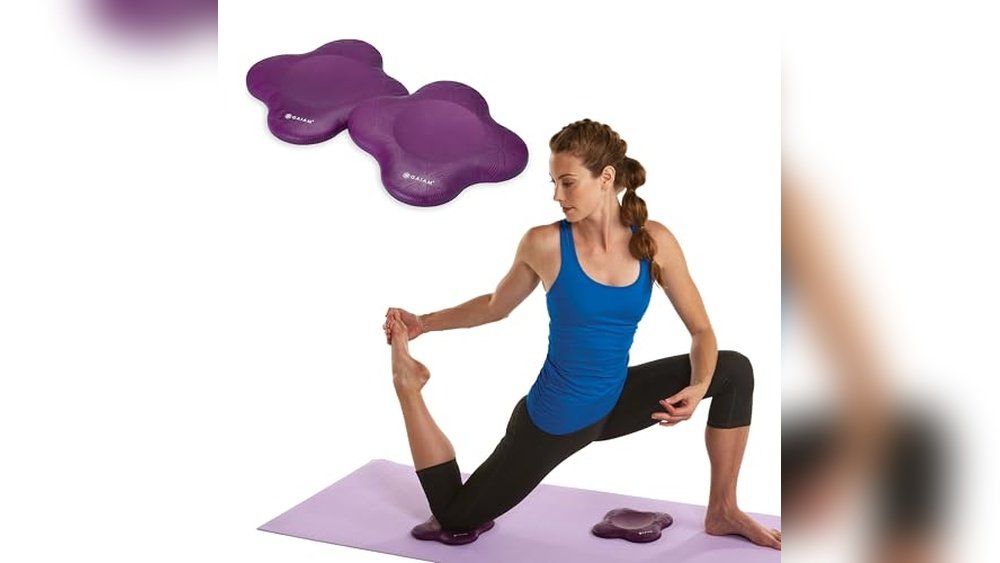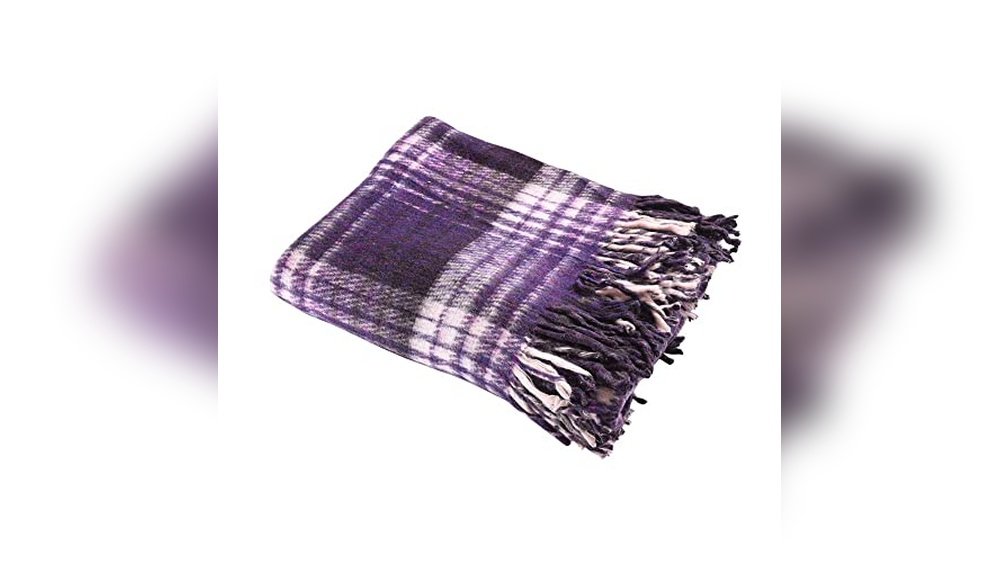Are you wondering whether you should choose a meditation blanket or a yoga blanket for your practice? Both blankets might look similar at first glance, but they serve different purposes and offer unique benefits.
Whether you’re aiming for extra comfort during meditation or reliable support in your yoga poses, understanding the key differences and similarities will help you pick the perfect blanket for your needs. Keep reading, and you’ll discover how the right blanket can elevate your routine, making each session more enjoyable and effective.

Credit: yogorillamats.com
Yoga Blanket Features
Yoga blankets are essential tools for many yoga practitioners. They add comfort and support during poses. These blankets differ from regular ones in materials and design. They are made to last and provide the right firmness.
Understanding their features helps you choose the right blanket for your practice. Below are key aspects of yoga blankets.
Materials And Texture
Yoga blankets usually use thick cotton or wool. These materials offer breathability and softness. The texture is firm enough to hold shape. It prevents slipping during poses. Some blankets have a slightly rough texture for grip. Others are smooth for warmth and comfort.
Design And Durability
Designs are simple and functional. Colors are often calming and earthy. The edges are tightly stitched to avoid fraying. Many blankets are made to fold easily. This helps in creating layers for extra support. Durability is important. These blankets can handle repeated folding and weight.
Support And Padding
Yoga blankets provide extra padding on hard floors. They protect joints like knees and elbows. The thickness varies but is enough to cushion without being bulky. Folding the blanket adds height where needed. This support helps maintain proper alignment. It makes poses safer and more comfortable.
Meditation Blanket Features
Meditation blankets offer unique features that enhance your practice. They provide comfort and support for longer meditation sessions. The right blanket can create a calm and focused space. Many meditators choose blankets designed specifically for this purpose. These blankets help maintain body warmth and promote relaxation.
Understanding the key features of meditation blankets helps you select the best one. Comfort, warmth, and material quality play important roles. Below, explore these main features in detail.
Softness And Comfort
Meditation blankets must feel soft against the skin. A gentle texture reduces distractions during meditation. Comfort encourages you to sit still for longer periods. Many blankets use plush fabrics or soft wool. These materials create a cozy and inviting surface. Softness is essential for a peaceful meditation experience.
Warmth And Security
Maintaining warmth is important during meditation. A meditation blanket offers gentle heat without overheating. This warmth helps muscles relax and eases tension. Feeling secure under a blanket can calm the mind. It creates a small, protected space that supports focus. Many blankets have a weight that adds to this sense of security.
Material Choices
Materials affect both comfort and durability. Common materials include cotton, wool, and fleece. Cotton blankets are breathable and easy to clean. Wool provides excellent insulation and natural softness. Fleece offers warmth and a plush feel. Some blankets combine materials for the best qualities. Choosing the right material depends on personal preference and climate.
Functional Differences
Meditation blankets and yoga blankets both offer comfort and support. Their functions, however, differ based on the activity. Understanding these differences helps choose the right blanket.
Use In Yoga Practice
Yoga blankets provide firm support during poses. They help cushion joints and add height for better alignment. Their sturdy fabric resists slipping, making them reliable. Yoga blankets often fold to create layers for extra padding.
Use In Meditation Sessions
Meditation blankets focus on comfort for long sitting periods. They offer softness and warmth to keep the body relaxed. These blankets usually have a softer texture and lighter weight. Their design encourages stillness and calm during meditation.
Versatility And Flexibility
Yoga blankets work well for stretching and balancing. They adapt to different poses needing structure or softness. Meditation blankets excel in creating a cozy space for mental focus. Both types can overlap but serve their primary purpose best.

Credit: blululi.com
Common Benefits
Meditation blankets and yoga blankets share several benefits despite their different uses. Both types of blankets improve your experience by adding comfort and support. They also help create a calming environment that aids focus and relaxation during practice.
Enhancing Comfort
Both blankets add a soft layer between you and the floor. This extra cushioning reduces pressure on your body. It helps you stay comfortable longer during meditation or yoga sessions. The blankets also provide warmth, which keeps muscles loose and relaxed.
Improving Posture Support
These blankets offer gentle support for your body. You can fold or roll them to fit under your knees, back, or hips. This support encourages proper alignment and reduces strain. Good posture helps prevent injuries and deepens your practice.
Promoting Relaxation
Using a meditation or yoga blanket creates a cozy space. This sense of comfort makes it easier to calm your mind. The blankets help block distractions and promote a peaceful feeling. Relaxation improves focus and enhances the overall experience.
Choosing The Right Blanket
Choosing between a meditation blanket and a yoga blanket depends on your needs for comfort and support. Meditation blankets offer softness for sitting, while yoga blankets provide firm structure for poses. Both enhance your practice but serve different purposes.
Selecting the right blanket enhances your practice and comfort. Both meditation and yoga blankets serve unique roles. Knowing these roles helps you pick the best option. Your choice depends on how you use the blanket and what you expect from it.
Comfort, support, and ease of use matter most. The right blanket boosts relaxation and aids in posture. It supports your body during meditation or yoga poses. Consider your needs carefully before making a decision.
Purpose And Usage
Meditation blankets mainly offer warmth and comfort. They help you sit still for longer periods. Yoga blankets provide padding and support during poses. They add stability to your body and protect joints.
Meditation blankets are softer and thicker for coziness. Yoga blankets are firmer and more structured. Each blanket suits different activities and helps improve focus and balance.
Material Preferences
Meditation blankets often use soft, natural fibers like wool or cotton. These materials keep you warm and feel gentle on the skin. Yoga blankets use durable fabrics that hold shape well. Cotton or a cotton blend is common for yoga blankets.
Choose a material that feels good and matches your routine. Breathable fabrics prevent overheating during meditation or yoga practice. Easy-to-clean materials save time and effort.
Size And Portability
Meditation blankets tend to be smaller and lighter. They are easy to carry for indoor or outdoor use. Yoga blankets are larger to support different body parts. They fold or roll for convenience during transport.
Consider where you will practice most often. Portability matters if you attend classes or travel. At home, size and thickness matter more for comfort and support.
Care And Maintenance
Proper care and maintenance keep meditation and yoga blankets in good shape longer. Both types of blankets need gentle handling to preserve their texture and function. Cleaning, storing, and considering durability are key to maintaining quality and comfort. Follow simple steps to extend the life of your blankets and enjoy their benefits daily.
Cleaning Tips
Use mild detergent and cold water for washing blankets. Hand wash or use a gentle machine cycle to avoid damage. Avoid bleach or harsh chemicals that weaken fibers. Air dry blankets flat to keep their shape intact. Spot clean stains quickly with a damp cloth and mild soap.
Storage Advice
Store blankets in a dry, cool place away from direct sunlight. Fold blankets neatly to prevent wrinkles and creases. Avoid placing heavy items on top to maintain fluffiness. Use breathable storage bags to reduce moisture build-up. Keep blankets separate from strong-smelling items to avoid odor absorption.
Durability Considerations
Choose blankets made from strong, natural fibers for long-term use. Check seams and edges regularly for signs of wear or fraying. Meditation blankets often use softer materials, so handle them with extra care. Yoga blankets are usually thicker and more robust. Rotate blankets during use to distribute wear evenly.

Credit: www.fitsri.com
Frequently Asked Questions
What Is The Difference Between A Yoga Blanket And A Blanket?
A yoga blanket offers firm support, extra padding, and durability for poses. Regular blankets provide warmth but lack structure and stability needed in yoga.
What Is The Difference Between Yoga And Meditation?
Yoga combines physical poses and breathing exercises for body and mind fitness. Meditation focuses solely on mental concentration and calmness. Both practices complement each other but serve different purposes: yoga enhances physical strength and flexibility, while meditation improves mental clarity and peace.
Can You Use Any Blanket For Yoga?
Not all blankets suit yoga. Yoga blankets provide firm support, durability, and non-slip texture, unlike regular soft blankets. Use a cotton or Mexican yoga blanket for stability and comfort during poses.
Is Mediation The Same As Yoga?
Mediation and yoga differ: meditation focuses on mental calm, while yoga combines physical poses and breathing exercises. Both practices complement each other but are not the same.
Conclusion
Both meditation and yoga blankets offer comfort and support during practice. Meditation blankets provide warmth and softness for sitting still longer. Yoga blankets add firmness and structure for better pose alignment. Choosing depends on your needs: relaxation or physical support.
Both enhance your experience, making sessions more enjoyable. Understanding their differences helps you pick the right one. Each blanket plays a unique role in your wellness journey. Simple tools, big benefits.



